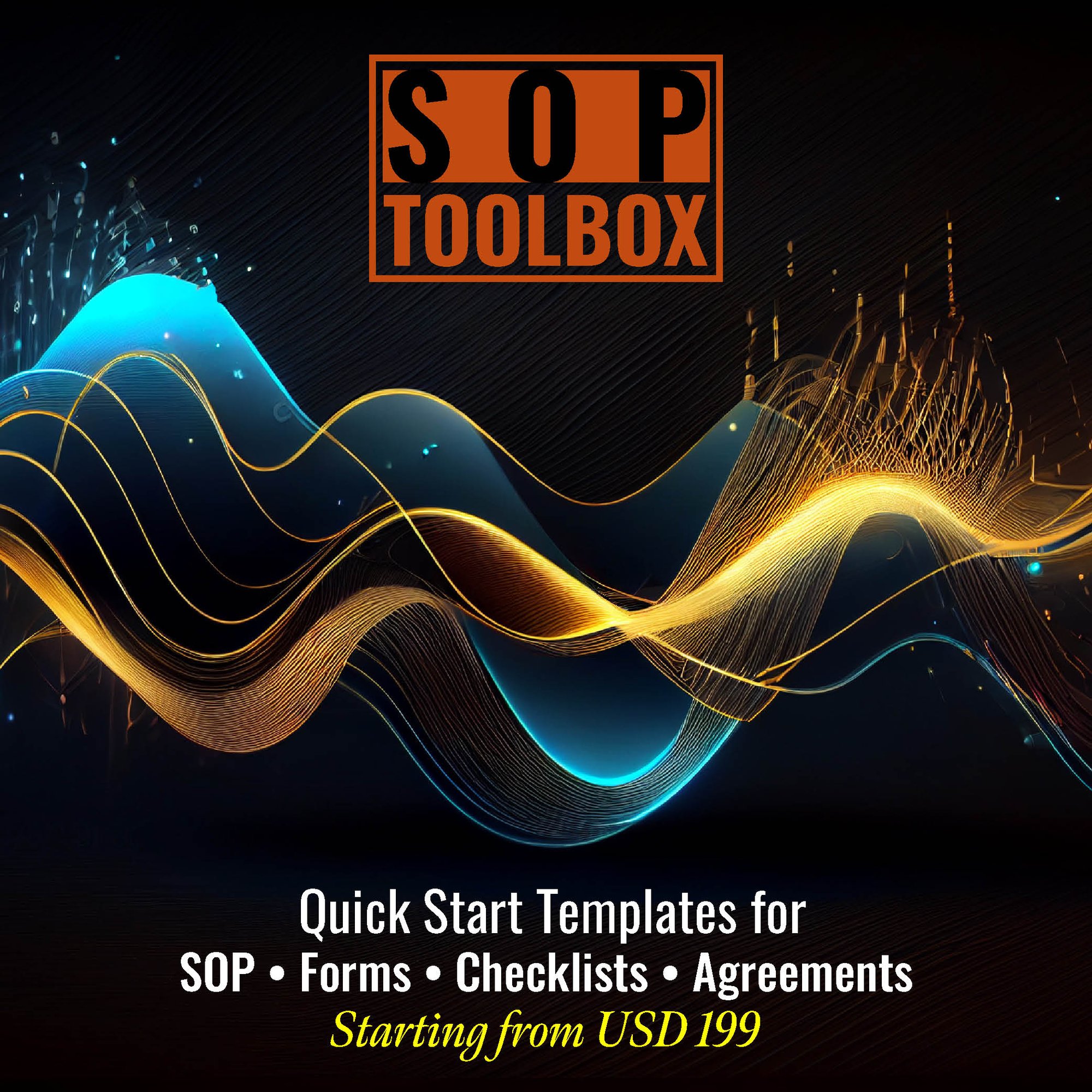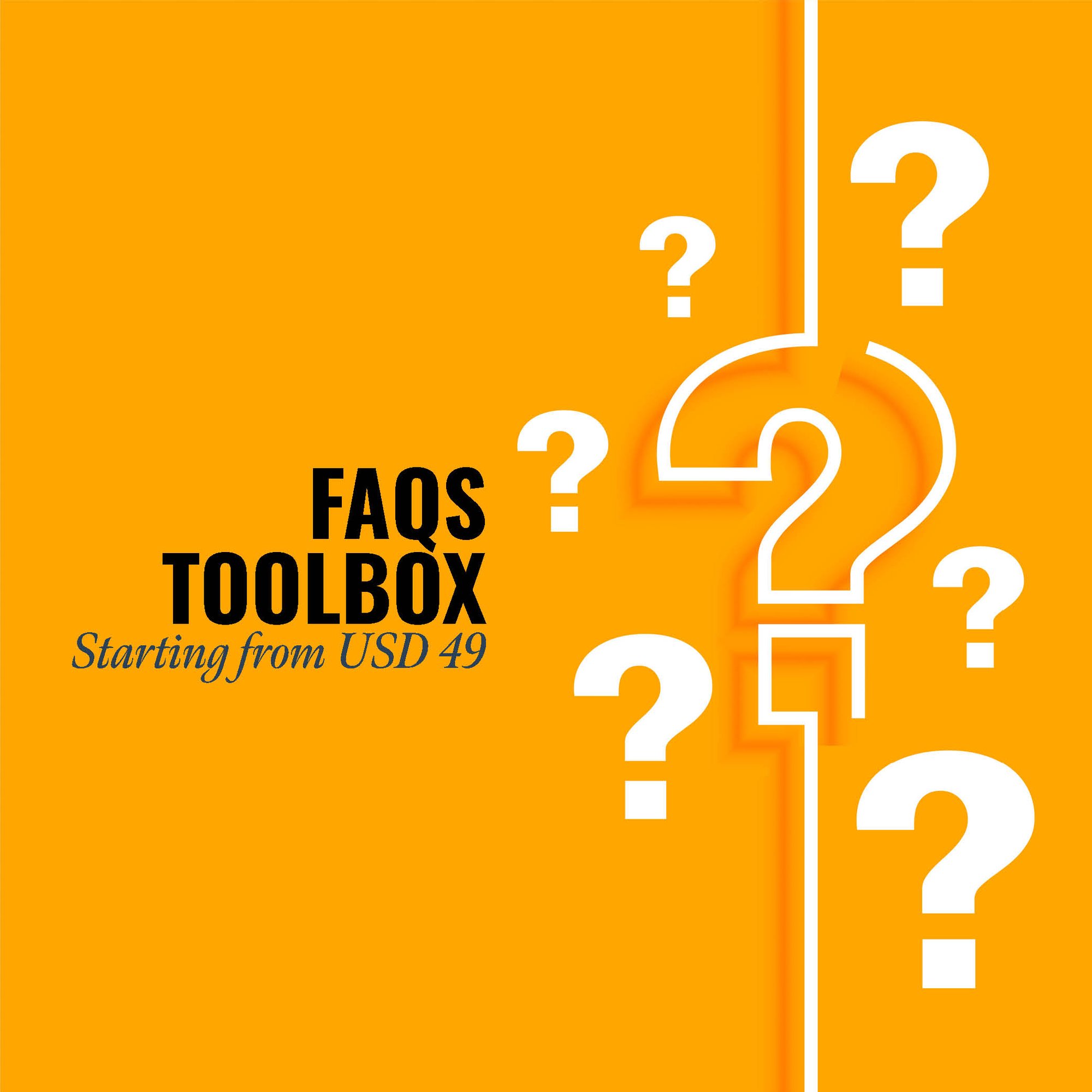An SOP (Standard Operating Procedure) Manual for the Treasury Department is of paramount importance for several reasons. First and foremost, it ensures consistency and compliance in financial operations. By providing a standardized set of procedures, it minimizes the risk of errors, fraud, and financial mismanagement.
Second, it enhances transparency and accountability. The manual outlines clear responsibilities and processes, making it easier to track financial transactions and audit financial performance. This transparency builds trust among stakeholders, both internal and external.
Moreover, the SOP Manual facilitates knowledge transfer and training. New employees can quickly learn the established procedures, reducing the learning curve and ensuring that the department's operations continue smoothly.
Lastly, it aids in risk management and contingency planning. By documenting protocols for various financial scenarios, the Treasury Department can better prepare for unforeseen events and mitigate financial risks effectively. In summary, an SOP Manual for the Treasury Department is a critical tool for maintaining financial stability, compliance, and operational efficiency.
CLICK HERE to download the List of SOPs Document in PDF format. Please share this document with your clients, colleagues and senior officers.
Top 50 Standard Operating Procedures (SOPs) for Treasury Department
SOP-1161-001: Standard Operating Procedure for Cash Management Procedures
SOP-1161-002: Standard Operating Procedure for Banking Relationships
SOP-1161-003: Standard Operating Procedure for Payment Processing
SOP-1161-004: Standard Operating Procedure for Treasury Risk Management
SOP-1161-005: Standard Operating Procedure for Investment Management
SOP-1161-006: Standard Operating Procedure for Debt Management
SOP-1161-007: Standard Operating Procedure for Financial Reporting
SOP-1161-008: Standard Operating Procedure for Cash Forecasting
SOP-1161-009: Standard Operating Procedure for Fraud Prevention and Detection
SOP-1161-010: Standard Operating Procedure for Bank Reconciliation
SOP-1161-011: Standard Operating Procedure for Cash Concentration and Pooling
SOP-1161-012: Standard Operating Procedure for Vendor Management
SOP-1161-013: Standard Operating Procedure for Compliance with Regulatory
SOP-1161- SOP-1161-014: Standard Operating Procedure for Requirements
SOP-1161-015: Standard Operating Procedure for Disaster Recovery and Business Continuity Planning
SOP-1161-016: Standard Operating Procedure for Technology and Systems
SOP-1161-017: Standard Operating Procedure for Cash Handling for Branches or Locations
SOP-1161-018: Standard Operating Procedure for Treasury Documentation
SOP-1161-019: Standard Operating Procedure for Currency Exchange Procedures
SOP-1161-020: Standard Operating Procedure for Treasury Department Training
SOP-1161-021: Standard Operating Procedure for Treasury Performance Metrics
SOP-1161-022: Standard Operating Procedure for Investment Portfolio Rebalancing
SOP-1161-023: Standard Operating Procedure for Hedge Accounting
SOP-1161-024: Standard Operating Procedure for Compliance Reporting
SOP-1161-025: Standard Operating Procedure for Cybersecurity Procedures
SOP-1161-026: Standard Operating Procedure for Debt Refinancing
SOP-1161-027: Standard Operating Procedure for Grant and Donation Management
SOP-1161-028: Standard Operating Procedure for Tax Compliance
SOP-1161-029: Standard Operating Procedure for Cash Handling for Special Events
SOP-1161-030: Standard Operating Procedure for Endowment and Trust Management
SOP-1161-031: Standard Operating Procedure for Investment Strategy Review
SOP-1161-032: Standard Operating Procedure for Asset Allocation
SOP-1161-033: Standard Operating Procedure for Counterparty Risk Assessment
SOP-1161-034: Standard Operating Procedure for Capital Allocation
SOP-1161-035: Standard Operating Procedure for Interest Rate Management
SOP-1161-036: Standard Operating Procedure for Liquidity Stress Testing
SOP-1161-037: Standard Operating Procedure for Mergers and Acquisitions (M&A) Support
SOP-1161-038: Standard Operating Procedure for Vendor Payment Approval
SOP-1161-039: Standard Operating Procedure for Grant Compliance
SOP-1161-040: Standard Operating Procedure for Capital Markets Transactions
SOP-1161-041: Standard Operating Procedure for Treasury IT Security
SOP-1161-042: Standard Operating Procedure for Environmental, Social, and Governance (ESG) Reporting
SOP-1161-043: Standard Operating Procedure for Tax Strategy
SOP-1161-044: Standard Operating Procedure for Intercompany Transactions
SOP-1161-045: Standard Operating Procedure for Treasury Committee Meetings
SOP-1161-046: Standard Operating Procedure for Compliance with Basel III/IV
SOP-1161-047: Standard Operating Procedure for Investment Due Diligence
SOP-1161-048: Standard Operating Procedure for Cybersecurity Training
SOP-1161-049: Standard Operating Procedure for Treasury Reporting Systems
SOP-1161-050: Standard Operating Procedure for Foreign Currency Translation
.jpg?width=645&height=337&name=Standard%20Operating%20Procedure%20-%20SOP%20ToolBox%20(1).jpg)
SOP ToolBox: If you are reading these lines, I am sure you are looking for Standard Operating Procedure guidelines or SOPs itself. In both the cases, searching in internet will not be yielding any great help. Because no company shares their SOP Development Process and certainly don’t share their SOP Documents. The best way to develop an SOP is creating one for yourself. At Fhyzics, we write SOPs day-in and day-out for companies across the globe including some of the Fortune 500 organisations. Our charge ranges from USD 5000 to USD 50000 depending upon the number of processes to be covered. Certainly, this is not affordable to small and mid-size organisations. Hence, we decided to create this SOP ToolBox to disseminate our 8-Step SOP Development Life-Cycle and best practices at an unbelievably low price.
I always say, writing an SOP is somewhere between art and science. So far you may be clueless on where to start and how to progress on an SOP? This will not be the case after you diligently go through this SOP ToolBox. We have summarised all our secrets here to get you started and to deliver a stunning SOP to your management.
Department Under the Treasury:
- Front Office: Responsible for carrying out day-to-day analysis and transactions relating to the management of funding, risk, cash and liquidity.
- Middle Office: Only larger treasuries will have a middle office often picking up some of the roles under ‘back office’, commonly the reporting and analysis type roles, but it varies enormously by organisation.
- Back Office: Administers and supports the front office and its main functions are to validate (confirm and verify), settle, and account for deals.
- Cash Forecasting
- Working Capital Management
- Cash Management
- Investment Management
- Treasury Risk Management
- Credit Rating Agency Relations
- Bank Relations
- Fund Raising
- International Group of Treasury Association (IGTA).
- The Association of Corporate Treasurers (ACT).
- Association for Financial Professionals (AFP).
- Finance and Treasury Association (FTA)
- The Certified Treasury Professional (CTP).
- The North Carolina Treasury Management Association (NCTMA).
- St. Louis Treasury Management Association (LTMA).
- Treasury Management Association of Chicago (TMAC).
- European Association of Corporate Treasurers (EACT).
- American Bankers Association (ABA).
- The San Francisco Treasury Management Association (SFTMA).
- Global Association for Quality Management (GAQM).
- Treasury Department Recreation Association (TDRA).
- Central Ohio Association for Financial Professionals (COAFP).
- Association of Corporate Treasurers Singapore (ACTS).
- Association of Corporate Treasurers (ACT).
- Treasury Historical Association (THA).
- Alabama Association for Financial Professionals (AAFP).
- The Houston Treasury Management Association (HTMA).
- Dallas Association for Financial Professionals (DAFP).
- Malaysian Association of Corporate Treasurers (MACT).
- Alliance of Texas Treasury Associations (ATTA).
- Mid- Atlantic Association for Financial Professionals (MAAFP).
- Rocky Mountain Association for Financial Professionals (RMAFP).
- Iowa State County Treasurer’s Association (ISCTA).
- ISO 9001: 2015
- ISO 2001: 2015
- ISO 27001: 2013
- ISO 9001: 2008
- ISO 29990: 2010
- ISO 9001: 2000
- Treasury Management Finance Magazine | https://iupindia.in/Treasury_Management.asp |
- Journal of Finance and Banking | https://www.journals.elsevier.com/journal-of-banking-and-finance |
- Journals of Corporate Treasury Management | https://journals.indexcopernicus.com/journal/29435 |
- Journal of Risk and financial Management | https://www.mdpi.com/journal/jrfm |
Keywords: sop, manual, policy, sop meaning, sop full form, standard operating procedure, full sop, user manual, sop is, user guide, instruction manual, owners manual, sample sop, operators manual, sop example,standard operating procedure examples, abbreviation sop, standard operating procedure sample, milk sop, sop document, sop process,m manual, operating procedures, operating process, sop meaning in hindi, standard procedure, sop standard operating procedure, sop top, sop writing, standard operating procedures manual, sop meaning in english, sample sop for mba, standard operating procedures examples in office, product manual, sample sop for ms, maintenance manual, sop security, sop in research, sop in business, whats sop, standard of operation, sop set, sop procedure, sop marketing,sop training, sop hotel, sop, sop meaning business, sop form, sba sop,sop software, help manual, sop it, army sop, company sop, sop sap, o m manual, standard operating procedure examples for small business, shop manual, sop manual, sop meaning in business, purpose of standard operating procedures, sop full meaning, standard operating procedure meaning, sop military, sop standard, sop meaning medical, hr sop, sop production, purpose of sop, sop management, warehouse sop, sales sop, sop pharma, sop manufacturing, sop creation, sop laboratory, ms sop, sop full form in hindi, sop front office, sop customer service, sop online, gmp sop, sop purchasing, sop pharmacy, sop safety, sop for project management,sample sop for australian student visa, sop meaning in tamil, sop system, best sop, sop up, sop in english, sop for mechanical engineering, sop for university,sop in malay, sop lab, sop for business analytics, sop model, sop in pharmacy, developing sops, standard operating procedure examples manufacturing, sop full form in retail,sop full form in medical, sop engineering, sop application, writing standard operating procedures, procurement sop, sop maintenance,standard operating procedure nhs, sop clinical trial, sop operations,sop in construction, operating procedures manual, standard operating procedure ppt, standard procedure meaning, sop ppt, a sop, sop document meaning, sop def, sop full form in safety, sop quality control, sop for college, sop quality, sop service, types of sop, sop for engineering management, sop document sample, benefit of sop, preparing sop, standard operating procedure in hindi, sop for visa, sop compliance, sop protocol, sop aviation, sop meaning in chat, standard operating process, sop meaning military, sop for business management, standard operating procedure software, sop list, sop medical, sop logistics, sop project, sop for it department, sop call center, standard work procedures, sba sop 50 10, sop meaning in logistics, standard operating procedure laboratory, test sop, sop sample for ms, drafting sop, sops meaning in tamil, sops meaning in telugu, sop automotive, standard operating system, sop cafe, sop slideshare, sop ap, sop bank, sop in retail, creating standard operating procedures, sop admin, document control sop, pharmaceutical sop,sop in pharmaceutical industry, statement of purpose harvard, sop examples for ms, quality assurance sop, sop in clinical research, nursing sop, sop for transportation, sop policies, sops are specific to a process, sop in hindi, standard operating procedure for warehouse picking, master sop, list of sop for pharma, pharmaceutical sop examples, types of standard operating procedures, retail sop, sample sop for ms in mechanical engineering, standard operating protocol,sop supply chain, system operating procedure, sop rules, example of sop in research, sop in food industry, sop for international business management, sop for hospitality management, sop for hr department, army sop example, sop standard operating, office sop, hr standard operating procedures, preventive maintenance sop, sop for purchase department, human resources sop, fire department sops, information technology sop, operating procedure example, administration sop,sop for retail store, indian sop, construction management sop, sop hotel front office, example sop document, standard and procedures,working sop, sop for maintenance department, sop hrd department,sop full form in hotel industry, sop full, sop for human resource management, laboratory sop examples, standard operating procedure for quality control, sop for ms in mechanical engineering, sop meaning army, security standard operating procedures, sop machine, sample sop for internship, sop for hotel management, sample sop for masters, qa sop, developing standard operating procedures, standard operating procedure document, product recall sop, marketing statement of purpose, it standard operating procedures, equipment sop, sop purpose example, sop shipping, sop for sales and marketing,converting pos to sop, workshop sop, standard operating procedure manufacturing, digital marketing standard operating procedures, following standard operating procedures, sop ki full form, sop for nursing procedures, an sop, purchase sop for manufacturing company, sop a, statement of purpose for mba marketing, full meaning of sop, sop for research internship, research sop sample,vendor qualification sop, sop purchasing and receiving, sop meaning in visa, sop for admission, standard operating procedure medical office, sop in industry, sop sales marketing, navy sop, project management standard operating procedures, sop it support, standard operating manual, security operating procedures, statement of purpose for international business, procurement standard operating procedures, communication sop, sop full form in pharma, minimum sop, sop health and safety, product sop, sop for marketing department, sop in medical terms, sales standard operating procedure, sop purchase order, department sop, customer service standard operating procedures, clinical sop, marketing standard operating procedure, sop standard operating procedure example, construction standard operating procedures, standard of operations procedures manual sample, sop for facility management, sop full form in education, standard operating procedure in food industry, visa sop,sop for business administration, company sop meaning, sop work, sop operating procedure, sop for summer internship in engineering sample, general administration sop, sop for administrative duties.
Our SOP Templates’ clients are from the following States and Countries:
Alabama, Alaska, Arizona, Arkansas, California, Colorado, Connecticut, Delaware, Florida, Georgia, Hawaii, Idaho, Illinois, Indiana, Iowa, Kansas, Kentucky, Louisiana, Maine, Maryland, Massachusetts, Michigan, Minnesota, Mississippi, Missouri, Montana, Nebraska, Nevada, New Hampshire, New Jersey, New Mexico, New York, North Carolina, North Dakota, Ohio, Oklahoma, Oregon, Pennsylvania, Rhode Island, South Carolina, South Dakota, Tennessee, Texas, Utah, Vermont, Virginia, Washington, West Virginia, Wisconsin, Wyoming.
Afghanistan, Albania, Algeria, Andorra, Angola, Antigua and Barbuda, Argentina, Armenia, Australia, Austria, Azerbaijan, Bahamas, Bahrain, Bangladesh, Barbados, Belarus, Belgium, Belize, Benin, Bhutan, Bolivia, Bosnia and Herzegovina, Botswana, Brazil, Brunei Darussalam, Bulgaria, Burkina Faso, Burundi, Cabo Verde, Cambodia, Cameroon, Canada, Central African Republic, Chad, Chile, China, Colombia, Comoros, Congo (Republic of the), Costa Rica, Croatia, Cuba, Cyprus, Czech Republic (Czechia), Democratic People’s Republic of Korea (North Korea), Democratic Republic of the Congo, Denmark, Djibouti, Dominica, Dominican Republic, Ecuador, Egypt, El Salvador, Equatorial Guinea, Eritrea, Estonia, Eswatini, Ethiopia, Fiji, Finland, France, Gabon, Gambia, Georgia, Germany, Ghana, Greece, Grenada, Guatemala, Guinea, Guinea-Bissau, Guyana, Haiti, Honduras, Hungary, Iceland, India, Indonesia, Iran, Iraq, Ireland, Israel, Italy, Jamaica, Japan, Jordan, Kazakhstan,Kenya, Kiribati, Kuwait, Kyrgyzstan, Lao People’s Democratic Republic (Laos), Latvia, Lebanon, Lesotho, Liberia, Libya, Liechtenstein, Lithuania, Luxembourg, Madagascar, Malawi, Malaysia, Maldives, Mali, Malta, Marshall Islands, Mauritania, Mauritius, Mexico, Micronesia (Federated States of), Moldova, Monaco, Mongolia, Montenegro, Morocco, Mozambique, Myanmar (Burma), Namibia, Nauru, Nepal, Netherlands, New Zealand, Nicaragua, Niger, Nigeria, North Macedonia (formerly Macedonia), Norway, Oman, Pakistan, Palau, Panama, Papua New Guinea, Paraguay, Peru, Philippines, Poland, Portugal, Qatar, Republic of Korea (South Korea), Republic of the Congo, Romania, Russian Federation (Russia), Rwanda, Saint Kitts and Nevis, Saint Lucia, Saint Vincent and the Grenadines, Samoa, San Marino, Sao Tome and Principe, Saudi Arabia, Senegal, Serbia, Seychelles, Sierra Leone, Singapore, Slovakia, Slovenia, Solomon Islands, Somalia, South Africa, South Sudan, Spain, Sri Lanka, Sudan, Suriname, Sweden, Switzerland, Syrian Arab Republic (Syria), Tajikistan, Thailand, Timor-Leste, Togo, Tonga, Trinidad and Tobago, Tunisia, Turkey, Turkmenistan, Tuvalu, Uganda, Ukraine, United Arab Emirates, United Kingdom of Great Britain and Northern Ireland, United Republic of Tanzania, United States of America, Uruguay, Uzbekistan, Vanuatu, Venezuela, Viet Nam, Yemen, Zambia, Zimbabwe.
Fhyzics supports organisations in developing the following documentations:
Standard Operating Procedures (SOPs), Work Instructions, Policies and Procedures, Process Flow Diagrams, Job Descriptions, Training Manuals, Employee Handbooks, Compliance Guidelines, Quality Assurance Manuals, Health and Safety Procedures, Risk Management Plans, Business Continuity Plans, Internal Audit Procedures, Incident Reporting Forms, Performance Management Guidelines, Change Management Procedures, Vendor Management Guidelines, Customer Service Protocols, IT Security Policies, IT Support Documentation, Disaster Recovery Plans, Operational Checklists, Data Management Policies, Confidentiality Agreements, Non-Disclosure Agreements, Employee Onboarding Procedures, Employee Exit Procedures, Performance Appraisal Forms, Employee Code of Conduct, Conflict Resolution Procedures, Product Development SOPs, Supply Chain Management Guidelines, Procurement Guidelines, Inventory Management SOPs, Shipping and Receiving Procedures, Production Scheduling SOPs, Maintenance Procedures, Equipment Calibration Documents, Environmental Compliance Documentation, Sustainability Policies, Customer Feedback Forms, Marketing Strategies, Advertising Guidelines, Brand Management Guidelines, Product Packaging SOPs, Laboratory Testing Procedures, Regulatory Compliance Documentation, Tax and Accounting Procedures, Contract Management Procedures, Legal Compliance Guidelines, Financial Reporting Procedures, Budgeting Procedures, Internal Control Procedures, Fraud Prevention Policies, Asset Management Guidelines, Purchase Order Procedures, Sales and Distribution Guidelines, Client Contracts, Customer Return Policies, Internal Communication Protocols, Vendor Evaluation Forms, Product Safety Standards, Workplace Health and Safety Standards, Public Relations Procedures, Social Media Management Guidelines, Crisis Management Plans, Employee Grievance Procedures, Privacy and Data Protection Policies, Digital Transformation Guidelines, Innovation Management Procedures, Continuous Improvement Guidelines, Strategic Planning Documents, Corporate Social Responsibility (CSR) Guidelines, Audit Trails and Records, Employee Training and Development Records, Succession Planning Documents, Talent Acquisition Procedures, Team Collaboration Protocols, Employee Benefit Plans, Workplace Diversity Guidelines, Time and Attendance Tracking, Payroll Procedures, Employee Leave Policies, Conflict of Interest Policy, Emergency Response Procedures, Environmental Impact Assessment Procedures, Transportation and Logistics Procedures, Inventory Control Forms, Warehouse Management Guidelines, Product Lifecycle Management SOPs, Customer Satisfaction Surveys, Third-Party Risk Assessment Guidelines, Technology Adoption Policies, Software Licensing Guidelines, Security Incident Response Procedures, Supply Chain Risk Management Policies, Product Recall Procedures, Food Safety Guidelines, Employee Wellness Programs, Workplace Ergonomics Guidelines.

















